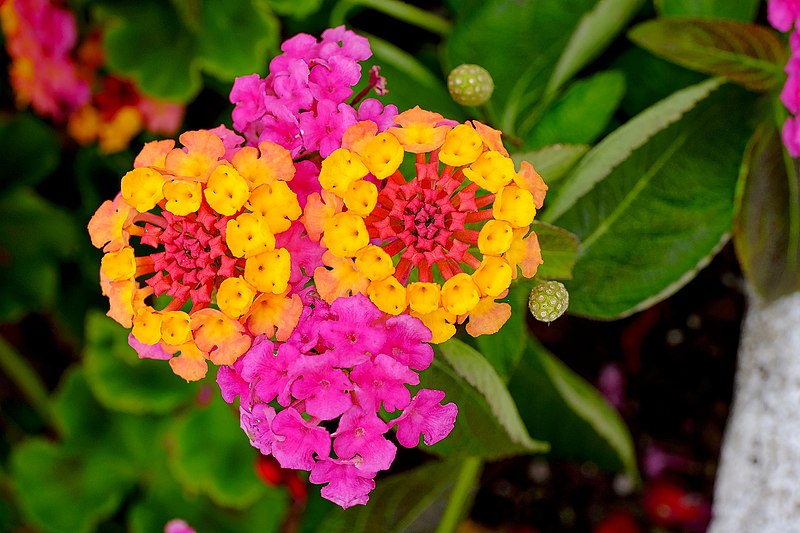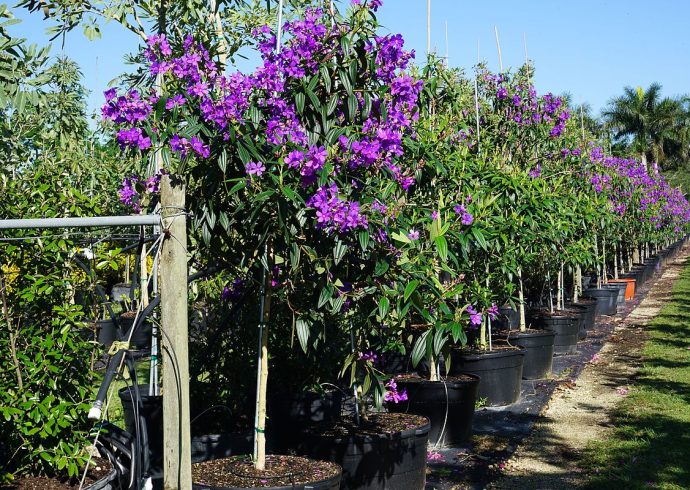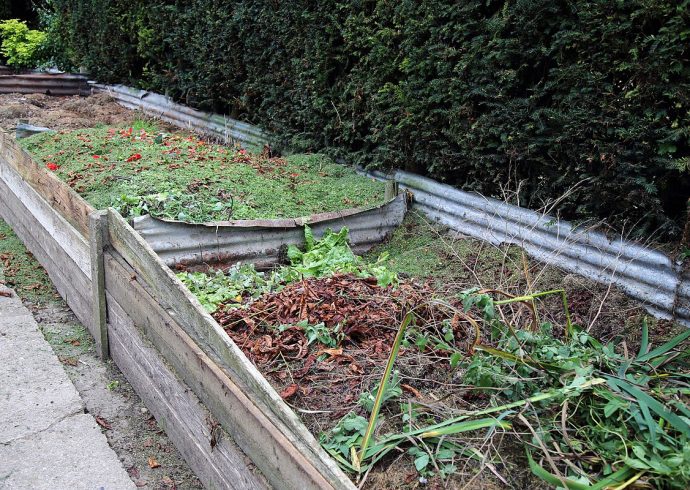
Brightening Up Your Winter Garden with Annuals
Your garden does not have to look empty and bleak once all the leaves have fallen off your trees and the temperatures have dropped. There are a number of annuals that you can plant in your garden that can withstand such temperatures. If a frost is predicted overnight and your garden is in full sunlight, be sure to protect your garden with leaves, and a temporary plastic covering for overnight. Plant your annuals separate from your perennials, which should be well protected from the cold temperatures. Mulch can be spread over the perennials once the ground gets solid from the cold. Below is a list of annuals for the winter season.
Snapdragons are always a garden favorite. Many of these flowers are two-toned in color and remind me of the spring with their color combinations, something that one can definitely look forward to after a long winter season. The pale pink and yellow, deep pink and yellow, and lemon yellow with dark yellow are beautiful color combinations that appear in the petals of these flowers. Snapdragons actually blossom more when cooler weather arrives so if you live in the northern states, this is an ideal annual to plant in your winter garden. The scientific name for snapdragons is Antirrhinum and they can grow in full sunlight or partial shade. The snapdragon is so named due to the supposed resemblance of the flower’s face to a dragon. The short version of the plant grows anywhere from eight to twelve inches in height, while the taller version is from sixteen to twenty inches in height. They are best planted in the early spring if you live in a cold climate, and planted in the late summer or fall if you live in a warmer climate. As a hardy annual, snapdragons blossom more if the top of each plant is cut off about a half inch from the top of the plant to allow more flowers to blossom. Remove any dead flowers from the plant when you do garden maintenance. Water at the bottom if the soil is dry. These flowers grow well in zones 3 to 11.
Zinnias are colorful flowers that blossom through the fall and early winter. If you have chrysanthemums in your garden, planting zinnias near them can make a wonderful complementary flower in shape and color. Zinnias are round in shape, have several layers of rayed petals, and come in every range of yellow, pink, red, and orange. There are a number of varieties of zinnias, including the zinnias elegans, border beauty, Peter Pan, a dwarf zinnia, and ruffles. Zinnias should be planted in the ground while the soil is still warm. You can buy them as plants from the nursery or seeds, starting the seeds indoors. Zinnias are quite easy to grow from seeds so if your living space permits, you can have a number of zinnia varieties started in your seed planters before they are ready to be transplanted into the warm ground. When the time comes for you to plant the zinnias in the ground, the soil should be well drained, and in an area with full sun exposure. As with snapdragons, cut a half inch off from the top of the plant so more blossoms can grow. When watering the zinnias, aim for the dirt at the base of each plant. If the zinnias remain damp they can grow mildew which will inhibit the growth of the plant. Zinnias are one of a number of flowers that can grow well in poor soil. The zinnia is named after the eighteenth century German botanist Johann Gottfried Zinn.
Pansies are no longer just for the spring. The winter variety of pansy can definitely brighten up a small garden in your front yard and because they are low-growing plants, you can plant taller winter annuals behind them. They grow in any soil that is well drained and can grow well in sunny areas or shady areas. Winter pansies also have “faces” as do spring pansies and come in a wide variety of colors. Plants can be purchased from your nursery during the fall season. Pinch off dead flowers to encourage blossoming. Slugs are a problem for winter pansies. Try sprinkling some sand at the base of each plant or a shallow dish of beer to keep the slugs from reaching the plants. When it comes time to water the pansies, every second day is best for the winter pansies. These flowers are very cold hardy.
Cosmos grows in the summer through fall and winter seasons. They are round in shape and have petals that are either pinnate or bipinnate spread out into “rays.” The two main varieties are cosmos sulphureus and cosmos bipinnatus although there are other varieties including a twelve inch tall one. Cosmos on the whole grow to be tall, from two to four feet in height, with the cosmos sulphureus growing as high as seven feet. Plants that tall may not be convenient for your garden but the two foot tall version is beautiful, with flower colors of white, pink, magenta, and purple in full bloom. There are both the candy striped cosmos and the gloria cosmos, which have two-tones of the same color in the flower. Plants can be bought from your local nursery and planted in the ground in sun or partial shade. Or if you prefer, you can plant cosmos seeds directly into the soil during the warm weather after the danger of frost has passed in your growing zone. Plants should be thinned eighteen inches apart from each other. Once the plants have grown to their full height, they can take less watering as they are accustomed to dry soil conditions. Cosmos originated as a flower in Mexico and Central America so even though they can tolerate dry soil, they can also live through the winter season. Taller plants may require support from stakes or a small free standing trellis. Remove dead flowers to promote more blossoms. They are hardy for zones 5 to 9.
Alyssum plants have oval leaves with white or yellow flowers. A few species have pink and purple flowers. The white variety is easy to grow and makes a lovely border plant and is a ground cover, making it possible to grow another winter annual behind the alyssum. The tallest they grow is 4 inches tall, with the small flowers clumping together to form “snowball” shapes. Alyssum will grow until the frost arrives and prefer the sun to partial shade in well drained soil. While alyssum can be planted from seeds indoors, plants can be bought at the nursery and then directly planted into the soil. They can also be quite beautiful if you have a winter rock garden. Plant the alyssum plants eight to ten inches apart. Keep the plants watered once or twice a week, depending on how dry the soil is. They can grow in zones 3 to 9, the hardy zones being 7 to 9.
Candytuft is native to the Mediterranean and has the Latin name of Iberis. This plant can grow in poor soil, and be grown from seeds or purchased as plants. Seeds directly planted in the ground should be spaced eight to ten inches apart in well drained soil. Candytuft likes full sunlight or partial shade and they grow well in a winter rock garden. Seeds start to blossom just a few weeks after germination. The plant has clusters of flowers in white, pink, purple and red. They come in solid colors but also come in bicolors such as yellow and pink. Candytuft can brighten up a winter garden with its colorful flowers. The plant is a member of the mustard family. A candytuft flower has several layers of round petals overlapping each other, creating a half-ball shape. The plant grows from nine to twelve inches tall and requires good soil, full sun, and water once a week. Candytuft can grow well in dry soil. In zones 1 and 2 they grow as winter annuals.
The Kingfisher daisy is one of those few flowers that has a rich, vibrant blue color. This flower grows to six inches tall and makes an excellent border plant for your garden. Kingfisher daisy likes full sun, and grows well in dry soil. The Latin name for this plant is Felicia Amelloides and is native to South Africa. The plant’s leaves are grass like while the flower has beautiful blue petals like a white daisy, with a yellow center. The color combination of blue and yellow alone reminds one of Easter, a great reason to plant Kingfisher daisies in your garden during the winter time. To grow Kingfisher daisies, a compost of loam, leaf mold and sand is generally required when you plant the young plants in the ground. Kingfisher daisy seeds can also be sown indoors in small seedling pots then transferred to the outdoors in well drained soil. When you plant the flowers, space them six to nine inches apart. These flowers will bloom throughout the year. Avoid over watering this plant as they are accustomed to dry weather conditions. Grows well in zones 4 to 10.
Impatiens Walleriana is also known as Busy Lizzie and is noted for its iridescent round petals. These flowers are a ground cover, growing from four to nine inches tall and come in red, pink, white, and yellow colors. Impatiens are native to South Africa and grow best in dry conditions. These flowers can be grown from seed but plants can be purchased from a nursery and are quite affordable so you can buy several flats for your winter garden. Impatiens will grow until a major frost comes. When you plant impatiens outside, space them six inches apart in well drained soil and add an organic compost to the plants. Impatiens do not require full sunlight; in fact, they grow quite well in the shade. As they grow, pinch off any dead flowers and trim a half inch from the top of each plant to increase blossoming. Grows well in zones 4 to 9.
Lupine flowers are known for their long spike shapes with pea flowers and can grow to three feet tall. A native of North America, lupines can be a wonderful complement to foxglove plants in your garden. As with foxglove, lupine flowers are highly toxic but both plants provide a drug extract for heart disease. Best placed in the back of a garden due to their height, lupines come in every color: white, yellow, pink, red, blue, purple. This plant likes dry soil with no lime in the soil. Lupines can be planted from seed directly into the soil in full sun or partial shade during the wintertime when the last frost has passed. If you decide to grow lupines from seeds, soak the seeds in hot water to promote quicker germination in the soil. Plants should be spaced one foot apart. Water your lupines once a week. Lupines grow well in cool weather and will bloom throughout the winter season in zones 4 to 9.
Valerian is an herb known to the ancient world and come in white, pink, and red, colors. The petals are tiny, with each small flower of four petals creating one larger cluster of flowers with delicate spikes coming from the center of each flower. The plant can grow to three feet tall, prefers moist soil, and can be found growing wild throughout North America and Eurasia. Valerian plants can also be purchased through a nursery. While the plants can be cultivated from seeds, seedlings require a good amount of attention. Valerian has a sweet scent which becomes stronger as a cut flower in a vase of water. Valerian is known for its medicinal properties for insomnia, and anxiety. It is a relaxant for the muscles as well. If you have a cat and you see your cat is giving your newly planted valerian some attention, don’t be alarmed; valerian has a chemical similar to catnip that is harmless to cats. Grows in winter zones 3 to 9.
Don’t forget to use an all-purpose fertilizer on your winter plants and a pesticide if needed, especially the snapdragons and pansies. Any of the flowers listed above can be combined to make an attractive winter garden. If you have a rock garden in bloom during the rest of the year, in the winter months plant impatiens, candytuft, kingfisher daisy, and alyssum in your rock garden. A patio garden can have lupines, snapdragons, with pansies in front of them. White alyssum and red impatiens can be a very striking combination for your winter garden. There are many combinations of flowers that can give a winter garden bright color to it.
Image Credit: Brian Kay, CC BY 3.0, via Wikimedia Commons.


